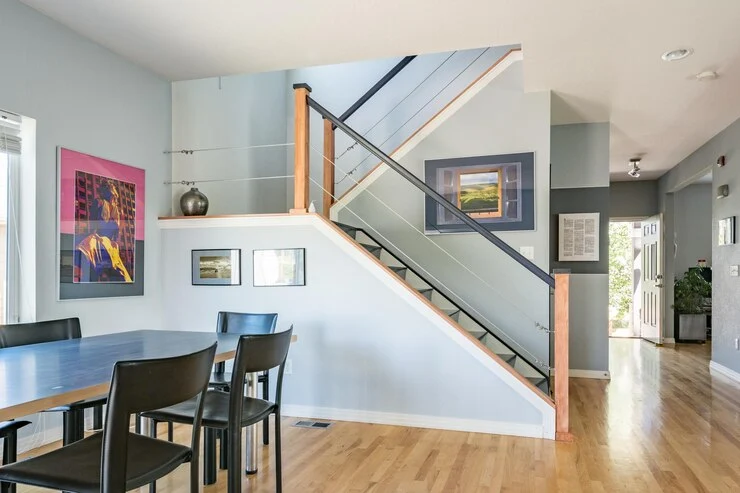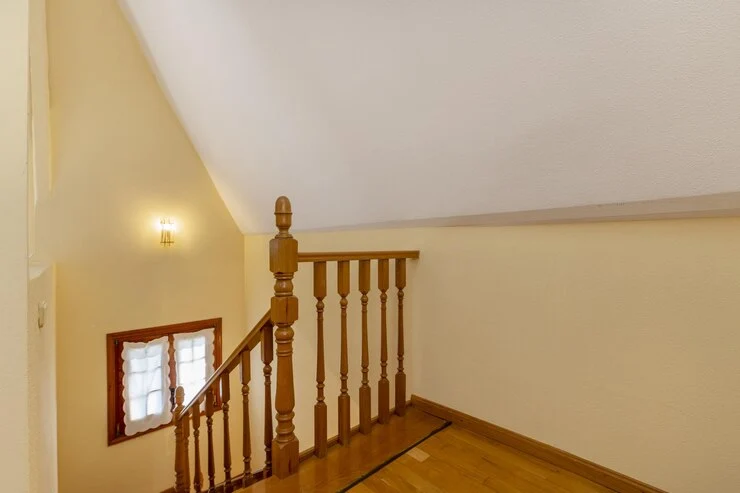If you’re looking to upgrade your home’s railings without tearing down the existing ones, you may wonder, can you install new railings over old railings? This approach saves money and is eco-friendly. It reduces waste and lowers labor needs. This guide covers all about overlaying new railings on old ones. Learn the benefits, challenges, materials, and steps involved.
What Are Railings and Why Are They Important?
Railings are essential structural and aesthetic components of staircases, balconies, decks, and porches. They provide safety, prevent falls, and enhance the overall design of your space. Railings provide a barrier on elevated surfaces, ensuring safety for families and guests. They can be made from wood, metal, glass, or composite materials. Railings offer both functionality and decoration.
Upgrading railings can transform your home’s look and meet safety codes. With many styles and materials, railings can match your property’s design.
Benefits of Installing New Railings Over Old Railings
Overlaying new railings onto existing ones offers several advantages:
Cost Savings
Removing old railings can be labor-intensive and expensive. By leaving the original railings in place, you reduce labor costs and material waste. This makes overlaying a cost-effective choice. It’s ideal for large projects like decks and porches.
Time Efficiency
Installing new railings over old ones is faster. It saves time compared to a full replacement. This is perfect for tight timelines. It’s great if you’re preparing for an event or meeting a construction deadline.
Reduced Waste
Reusing old railings promotes sustainability. It reduces material waste and disposal. This eco-friendly method helps reduce the environmental impact of your renovation project.
Structural Reinforcement
Sometimes, old railings add extra support. This makes the new installation sturdier. This added stability can be especially beneficial in high-traffic areas.
Challenges of Installing New Railings Over Old Ones
While this method has its perks, it also comes with potential challenges:
Compatibility Issues
The new railings must align perfectly with the old ones in terms of size, shape, and structure. If they don’t fit, adjustments may be needed. This could include cutting or retrofitting.
Aesthetic Limitations
Old railings may limit the design of new ones. This can restrict your options. For example, modern glass railings may not pair well with older wooden structures.
Structural Integrity
Weak or damaged railings can be a risk. Overlaying new railings may affect safety. It’s crucial to ensure that the old railings can handle the added weight and stress.
Hidden Damage
Rot, rust, or hidden damage in old railings may not be visible. However, they can impact the new installation’s durability.
Key Considerations Before Installation
Assess feasibility before starting. Ensure installing new railings over old ones suits your project. Here are some factors to consider:
Condition of Existing Railings
Check the existing railings for any damage, rust, or decay. If they’re structurally compromised, replacing them entirely might be a better option. Perform a thorough examination, including testing for wobbling or loose components.
Material Compatibility
Make sure the new railings can be securely attached to the old ones. For example, metal railings may require specific fasteners to adhere to wooden railings. Compatibility will determine the durability and appearance of the final installation.
Local Building Codes
Check local regulations to ensure that the new installation meets safety standards. This is crucial for staircases and balconies. Not following the rules can result in fines or safety hazards.
Weight Considerations
Check if old railings can bear the weight of new ones. Ensure stability isn’t compromised. Overloading weak structures can lead to failure and accidents.
Aesthetic Alignment
Consider how the new railings will blend with the overall design of your space. Clashing styles can reduce the overall look of your home.
What is the Minimum Gap Between Railings?
Safety standards require proper spacing between railings. This stops small children or pets from falling through. Most building codes require a maximum gap of 4 inches (10.16 cm) between railings. This is vital for staircases and balconies to prevent accidents. Always check your local building codes, as requirements may vary by location.

Materials Suitable for Overlay Installations
Certain materials are better suited for overlay installations than others. Here are the most common ones:
Wood
Wooden railings are great for overlays, especially with wood. They’re versatile and provide a classic look. Regular maintenance like painting or staining may be needed.
Metal
Metal railings, such as iron or aluminum, are durable and can support heavy overlays. However, you may need specialized tools for installation. Metal railings are ideal for modern and industrial designs.
Composite
Composite railings offer a modern look and require minimal upkeep. They’re lightweight and easy to install over old railings. This makes them popular for residential projects.
Glass
Glass railings are visually stunning but need precise installation. They may not suit all overlay projects. They’re best for homes with a contemporary aesthetic.
Step-by-Step Guide to Installing New Railings Over Old Ones
Follow these steps to ensure a successful installation:
Step 1: Inspect and Prepare the Existing Railings
Clean and repair the old railings to ensure a stable base. Remove any loose parts, rust, or debris. Sand down rough areas to create a smooth surface for attachment.
Step 2: Measure and Plan
Take accurate measurements of the existing railings. Choose a design that aligns with the current structure. Sketch a plan to visualize the final outcome.
Step 3: Gather Tools and Materials
Common tools include a drill, screws, adhesive, and a level. Ensure you have all necessary materials for the new railings. Invest in high-quality fasteners to ensure durability.
Step 4: Install Mounting Hardware
Attach mounting brackets or other hardware to the old railings as needed. Ensure they are securely fastened to provide a strong foundation.
Step 5: Secure the New Railings
Align the new railings with the old ones and secure them using screws, bolts, or adhesive. Use a level to ensure accuracy. Tighten all fasteners to prevent movement.
Step 6: Finishing Touches
Apply paint, stain, or protective coatings to enhance durability and aesthetics. Add decorative elements, such as caps or trim, for a polished look. Ensure all hardware is properly tightened and perform a final safety check.
Common Mistakes to Avoid
Ignoring the Condition of Old Railings
Failing to address structural issues in the old railings can lead to unsafe installations. Always repair or reinforce weak areas before proceeding.
Skipping Measurement Steps
Inaccurate measurements can result in a poor fit and an uneven appearance. Double-check all dimensions before cutting or attaching materials.
Overlooking Building Codes
Non-compliance with local regulations can result in fines or the need for costly modifications. Always consult a professional or local authorities.
Using Inappropriate Fasteners
Using the wrong screws or bolts can compromise the stability of the installation. Pick screws or bolts that work with both materials.
Alternative Approaches to Railing Upgrades
If you’re not ready for a full overlay project, there are other ways to refresh your railings. One popular option is to update the stair railings without replacing them entirely. This approach is cost-effective. It helps achieve a modern look while keeping the existing structure.
How to Update Stair Railings Without Replacing?
Repainting or Staining
A fresh coat of paint or stain can breathe new life into your old railings. Choose colors or finishes that match your design. This creates a cohesive look.
Adding Decorative Elements
Install decorative caps, baluster sleeves, or embellishments. These modernize the appearance of your railings. These elements can transform basic designs into elegant focal points.
Replacing Balusters
Swapping old balusters for new ones can transform the style of your railings. Choose metal, wood, or glass to match your aesthetic.
Wrapping with New Material
Wrap old railings with wood or composite veneers to create a fresh, updated look. This method works well if the existing railings are structurally sound but outdated in appearance.
How to Replace Stair Spindles with Wrought Iron?
Replacing stair spindles with wrought iron is another effective way to update your railings. Wrought iron offers a modern and elegant look that can elevate your staircase’s design. Here’s how you can do it:
Step 1: Remove Old Spindles
Carefully detach the old spindles using a screwdriver or pry bar. Be cautious not to damage the handrail or base during removal.
Step 2: Measure and Cut Wrought Iron Spindles
Measure the height of the old spindles and cut the wrought iron replacements to the same size. Use a metal saw or grinder to make accurate cuts.
Step 3: Install the New Spindles
Insert the wrought iron spindles into pre-drilled holes in the handrail and base. Secure them with adhesive or fasteners designed for metal installations.
Step 4: Finishing Touches
Once all spindles are in place, ensure they’re aligned and secure. Apply paint or a protective finish if necessary to match your desired aesthetic.
These upgrades allow you to enhance safety and style without a full renovation. They are especially useful if the old railings are in good condition but need a design refresh.
Conclusion
So, can you install new railings over old railings? Yes, but only if the conditions are right. Carefully assess the structural integrity of old railings. Ensure material compatibility and follow safety standards for a successful, cost-effective upgrade. Whether aiming for a modern look or better safety, this approach saves time and money. It also minimizes waste. If in doubt, consult a professional to ensure your project meets all requirements. Additionally, exploring options like updating stair railings or replacing spindles with wrought iron can offer alternative solutions for improving your home’s appeal.
Plan and execute the installation carefully. Enjoy attractive and functional railings that will last for years.
